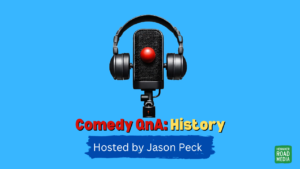A few weeks ago I was asked to do a speech at my local Toastmasters club’s Christmas Dinner. I had lots of humorous ideas and access to a plethora of street jokes, but I wasn’t quite clear on what an after dinner speech was.
I googled the term and found the seven golden rules as written by Gyles Brandreth the British author and M.P. who holds the record for the longest after dinner speech.
I already knew a lot of these tips so it was nice to have them re-established for me. The website Wise Geek defines an after dinner speaker as follows:
“After dinner speaking can be seen as an art in itself. The speaker must have the ability to entertain their audience in a captivating manner. Part comedian, part lecturer, the after dinner speaker should have a certain “wow” factor“.
That gave me a lot more to go on. Unfortunately, I didn’t really have a lot of time to create material from scratch and fully react to it like the Killer Stand-up System recommends.
So what I did was come up with a topic that I was interested in and that I thought I also might be able to promote to speaking agencies in the future.
Then I sourced some relevant street jokes and I came up with a structure that would allow them to flow together in a logical order.
From there I incorporated humorous lines that either I had written and used in my old stand-up act, or witty reactions that I’d made a note of from conversations that I’d had. That just meant I went through my ideas notebooks to find those lines and incorporate those too. You do write down your ideas in a notebook, don’t you?
After lots of rehearsal I delivered my speech to my fellow Toastmasters. I nearly “killed them”, but not quite. How do I know that I nearly killed them? Because I recorded my speech onto my dictaphone and then played it, whilst I ran it past the Comedy Evaluator Pro software from the Killer Stand-up System.
Okay, here’s the skinny on this great piece of software. When a performer, whether a speaker or comedian, is in front of an audience there are two things that could be happening:
1) the performer is speaking
2) the audience is responding. the audience response (laughter, cheering, applauding) is referred to as a Positive Audience Responce or PAR.
For comedians the following is often true: headliners are getting 4-6 laughs or more per minute. Therefore their PAR score is in the 30s, 40s or even 50s. An open mike comic often gets a PAR score under 5. So you get the idea.
On the other hand a speaker or presenter who uses comedy aims for a PAR score of 15. So I was very pleased when my speech came in at a respectable 11 PAR.
I’m estimating that it will take me another one or two performances of this speech to get it up to a 15 PAR. That said I do, however, want to reduce the amount of street jokes I use and replace them more and more with my own humorous reactions. So it may take a little longer.



